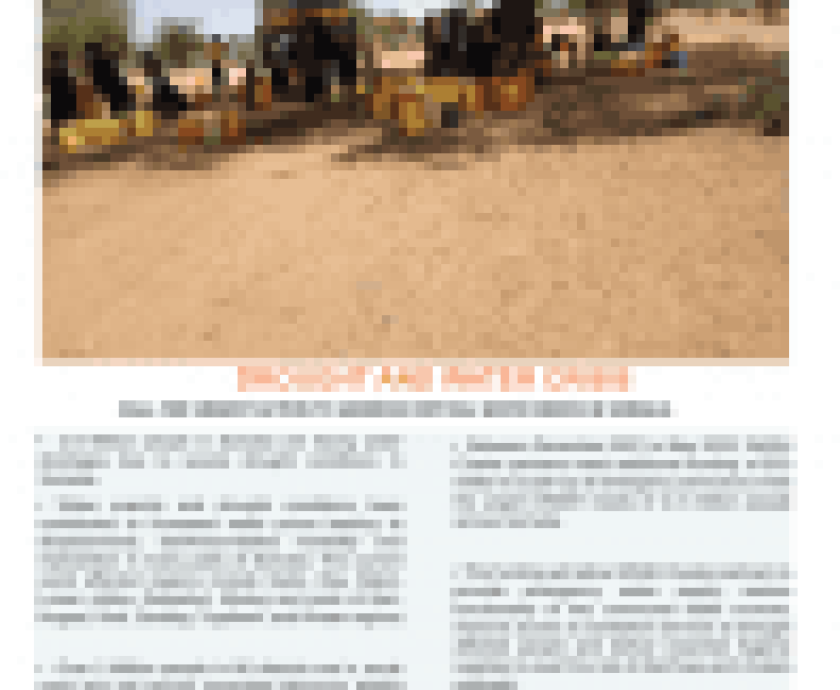Click to expand Image
Tibetans protest the Chinese government’s construction of a hydropower dam on the Dri Chu River, Derge county, Sichuan province, China, February 14, 2024.
© RFA
(New York) – The Chinese authorities should immediately release hundreds of Tibetan monks and villagers who were detained while peacefully protesting the construction of a hydroelectric dam in China’s western Sichuan province, Human Rights Watch said today. The dam, which will generate electricity for eastern China, will submerge historic monasteries and numerous Tibetan villages.
“The Chinese authorities have long been hostile to public protests, but their response is especially brutal when the protests are by Tibetans and other ethnic groups,” said Maya Wang, acting China director at Human Rights Watch. “Other governments should press Beijing to free these protesters, who have been wrongfully detained for exercising their basic rights.”
Reports from Radio Free Asia say that at least 300 villagers travelled to Derge county government in Sichuan province on February 14, 2024, to protest the building of the Kamtok (Tibetan: sKam thog, Chinese: Gangtuo) dam. Video footage obtained by Tibetan exile media and confirmed by Human Rights Watch shows villagers from the area of Wontoe (Tibetan: dBon po stod, Chinese: Wangbuding) protesting the dam’s construction. The dam is the sixth in a proposed series of 13 on the Dri Chu (Tibetan: ’Bri chu) River, known as Jinsha or the upper Yangtse River in Chinese.
Severe reprisals by the authorities in Tibetan areas of China have meant that protests – at least those publicly known – are rare. Extensive restrictions on communications make it difficult and dangerous to organize and publicize such events.
On February 20 and 21, teams of county officials and police arrived at two monasteries in Wontoe township in preparation for their demolition as part of the construction of the Kamtok dam. Yena monastery in Shiba village and Wontoe monastery in Wontoe village are cultural landmarks believed to date back over 700 years, and the mural paintings in the monasteries have historical importance.
Monks and villagers, including the bursar of Wontoe monastery, peacefully appealed to the authorities for dialogue. The following day, the police beat and detained large numbers of those who were part of the protest. Informants told Radio Free Asia that the police told detainees to bring food and bedding from home, indicating that their detention would be long. Community members who visited the detention centers to appeal for the detainees’ release were themselves detained.
Exile media sources have obtained and published other citizen videos that show the protests and subsequent detentions, which Human Rights Watch was unable to independently verify. While the videos provide a rare glimpse into the situation in Tibetan areas, they also heighten fears that people accused of sending the videos abroad will face severe punishment.
Five major hydroelectric dams are already in operation or under construction along this stretch of the river, with an installed capacity of 8.6 gigawatts. By comparison, the world’s most powerful hydro dam, the Three Gorges, lower down the Yangtse River, has a generating capacity of 22.5 gigawatts. All of this electricity is sent from Tibetan areas through the Ultra High Voltage “West to East” (xi dian dong song) transmission infrastructure, due to be completed by 2025.
Since 2017, authorities have relocated over 11,000 people from 7 townships in Gonjo and Markham counties bordering the Jinsha River for “poverty alleviation” reasons, according to official figures, though such reports do not link the mass relocation to dam construction.
The right to protections against forced eviction derives from the right to adequate housing as provided under the International Covenant on Economic, Social and Cultural Rights, to which China is a state party. According to the United Nations Committee on Economic, Social and Cultural Rights, which monitors state compliance with the covenant, for evictions to be lawful they must be “solely for the purpose of promoting the general welfare in a democratic society,” and carried out “in strict compliance with the relevant provisions of international human rights law and in accordance with general principles of reasonableness and proportionality.”
These safeguards include, for example, that the government explores “all feasible alternatives” prior to eviction, and that it provides an opportunity for genuine consultation with those affected. Mass evictions carried out in Tibetan areas often have not met these basic standards, Human Rights Watch said.
“The Chinese authorities’ mass arbitrary detention of peaceful protesters highlights grave concerns about the effects of further dam construction on Tibetans’ heritage, culture, and livelihoods,” Wang said. “The government needs to view genuine participation by the affected population as essential for carrying out major infrastructure projects.”



